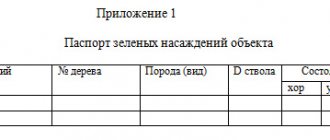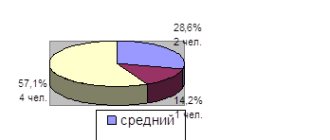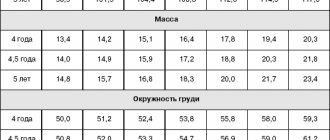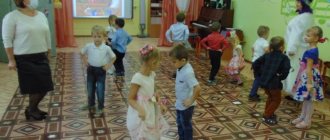Thematic control “Organization of a story game” educational and methodological material on the topic
Plan for thematic control on the topic:
"Organization of a story game"
Dates: April 10 – 21, 2021
Performers: head Kharchikova E.Zh., deputy head of the VMR Storozhenko E.Ya., senior teacher Gamolka S.Yu.
Purpose: to determine the effectiveness of educational work in preschool educational institutions on organizing role-playing games with preschool children.
Tasks:
1. Study the documentation of teaching staff on planning and directing role-playing games for preschoolers.
2. Assess the work of the teaching staff in organizing the management of role-playing games for children in different age groups.
3. Summarize the system of work and determine the prospects for the activities of the teaching staff in organizing the role-playing game.
Questions to be checked:
- Analysis of teacher guidance in children's play activities.
- Analysis of the conditions created in the group for children’s play activities.
- Professional knowledge and skills of the teacher in organizing children's play activities.
- Assessment of forms of interaction with parents on the problem of gaming.
Basic forms and methods of control
- Observation of teachers
- Interview with teachers
Assessment Toolkit
- Analysis of teacher guidance in children's play activities.
- Analysis of the conditions created in the group for children’s play activities.
- Identification of the level of gaming knowledge, skills and abilities in children.
Head of MBDOU
“Ilan kindergarten No. 50” E.Zh. Kharchikova
Final certificate of results
thematic control
Topic: “Organization of a story game”
The thematic inspection took place from April 10 to April 21, 2021 in accordance with the annual plan of educational work for the 2016-2017 academic year in all age groups.
By order of preschool educational institution No. 15 dated April 3, 2021, a commission was created consisting of:
Kharchikova E.Zh.. - chairman of the commission, head of the MBDOU;
Gamolka S.Yu. - member of the commission, Art. teacher
Storzhenko E.Ya. – member of the commission, deputy head. VMR
- An assessment of the teacher’s management of children’s play activities showed:
- When guiding game activities, teachers use game management techniques, pedagogical tact, and the emotional factor.
- The methodology of the game is followed. But the results are not summed up and the past game is not discussed, and in all groups no preliminary work is carried out before the game. In the older group, teacher Sukharkova N.M., there were errors in the methodology of the game: there was no setting of tasks and goals of the game, design of the development of the game, few techniques were used to develop activity and attract all children to the game.
- Interconnection with other activities was carried out partially.
- Almost all teachers have sufficient knowledge of the peculiarities of organizing a story-based game in each age group. But if board games are widely used in our kindergarten and are popular with teachers, then children mostly play role-playing games, left to their own devices, while teachers monitor discipline at this time, going about their business.
- An assessment of the conditions created in the group for children’s play activities showed:
- Conditions for children's play activities have been created in all groups of preschool educational institutions. The play centers are equipped with everything necessary, are in an aesthetically pleasing condition, and are located and stored in a place accessible for use by children. But there is no variety or zest in creating conditions for role-playing games.
- In all groups, teachers develop in children a sense of responsibility for preserving toys and the ability to put them in order, and follow the rules for using toys.
- In all groups, parents take an active part in making attributes for play activities: this includes sewing special clothes for roles, beds and clothes for dolls, purchasing containers for storing attributes, and making the attributes themselves for games.
- Role-playing games are planned systematically in all groups. Recommendations for planning the required number of games, thematic diversity, and matching the goals of the games with respect to age characteristics are taken into account and implemented by teachers.
- Assessment of gaming knowledge, skills and abilities in children showed:
- The level of development of playing qualities in all groups corresponds to age. In the younger group, children are actively taught the ability to invent and act out a simple plot, take on a role and perform role-playing behavior. Self-service skills are not fully developed; children do not know how to independently tidy up the attributes, equipment, and toys they use after finishing the game. In the older group, children play out only one plot; the introduction of an additional plot and roles complicates the development of the game. Not all children master the distribution of roles - they simply wedge themselves into the game and, if the players do not object, play in concert with them or in parallel. Substitute items are actively used in this group. Children play with enthusiasm and desire, and are well oriented in the play space of the group. In the pre-school group, children are able to clearly assign roles and perform role-playing behavior, set a goal and find the means to achieve it. Children feel a sense of responsibility for fulfilling the role assigned to them, but without the teacher’s prompting, the plot of the game does not develop; children are carried away by one game action that is of interest to them.
- In all groups, children have a sense of responsibility for fulfilling the role assigned to them, fulfill ethical standards of behavior during play, follow the rules for using toys, and do not know how to complete the game.
Based on the results of thematic control, the following conclusions can be drawn:
- The level of development of role-playing games and work in this direction by the teaching staff can be assessed as average. And the conditions for the game, and the preparedness of teaching staff, and planning, and cooperation with parents - all these areas require close attention and in-depth work of the entire team.
- An assessment of the conditions created in the group for children’s play activities showed that the conditions were created in all groups of preschool educational institutions, but required diversity.
- Basically, children's gaming knowledge, skills and abilities are formed. Children play actively and with interest, following the rules.
Recommendations:
- To improve the conditions for play activities that provide a new quality of education.
- To study the theoretical basis for organizing a role-playing game in accordance with the Federal State Educational Standard.
- Involve parents in organizing gameplay in preschool educational institutions.
Head of MBDOU
“Ilan kindergarten No. 50” E.Zh. Kharchikova
Deputy Head VMR E.Ya. Storozhenko
Senior teacher S.Yu. Gamolka
My kindergarten
- Name. “The state of development of play activity of children of younger and early age”
- Target. Find out the state of work on play activities in preschool institution N
- Terms of conduct. From ___ to ___
- Thematic control plan.
| N | Sections plans | Content | Methods |
| 1 | Children's development level survey | - Correspondence of the level of development of children's play activity to program goals and objectives - Children's ability to perform an action in an imaginary plan as a means of developing the symbolic function of thinking and forming a plan of ideas. -Children’s ability to reproduce human relationships in play; -Children’s ability to coordinate their play actions with play partners. | -Inspection of the level of development of children’s play activity through long-term observation of independent children’s play, organization of plot-based didactic games. Analysis of children's communication during play. |
| 2 | Assessment of a teacher's professional skills | -Ability to apply knowledge of program goals and objectives in practical work with children -Proficiency in methods and techniques for organizing children's play. Knowledge of the classification of children's games (games initiated by an adult; games initiated by children; folk games) and the ability to organize each of these types of games. | -Analysis of the teacher's organization of children's games -Analysis of the teacher's ability to influence children's play by creating and enriching the play environment -Analysis of the teacher's ability to use game techniques in classes on various types of children's activities. -Interview with the teacher. -analysis of teacher self-education. -analysis of the subject-developmental environment in the group (the competence of the teacher in its creation) |
| 3 | Creating conditions: -in a group -in a methodological room at a preschool educational institution | -The teacher’s ability to create a subject-developing play environment in a group that is appropriate to the age and level of development of children and program objectives. -Equipping the teaching room with diagnostic materials for the development of children’s play activities. | – Visiting groups -Analysis of the subject-game environment (from the point of view of its content) |
| 4 | Work planning | -Efficiency of planning (strategic, tactical and operational) for the development of games for children. | -Checking plans from the point of view of planning children's games: role-playing (by creating and enriching an appropriate play environment, enriching the experience of children); plot-didactic and didactic games; games with rules; outdoor games; dramatization games; folk games and gaming fun. |
| 5 | Working with family | -The effectiveness of interaction between a preschool institution and parents on the development of children’s play activities: parents’ understanding of the importance of developing children’s play activities for their successful development. - Availability of visual and reference information for parents on organizing children’s games at home | -Analysis of visual information for parents in the group. -Survey or survey of parents. |
Working materials for control: – Indicators of the development of play activity at different stages of preschool childhood. -Diagnostics of game development. -Questionnaire of professional skills of a teacher. - Map of analysis of self-education of educators - Protocol of examination of the subject-development environment. -Map of analysis of visual information for parents.
Visual information analysis map for parents
| N | Analysis criteria | Groups | |||
| N 1 | N 2 | N 3 | N 4 | ||
| 1 | Specificity of information | ||||
| 2 | Availability of the offered material | ||||
| 3 | Brevity of material | ||||
| 4 | Aesthetic design of visual materials | ||||
| 5 | Pedagogical appropriateness of the proposed materials | ||||
| 6. | Material supply form | ||||
| - folders - moving | |||||
| - stands | |||||
| - screens | |||||
| -Information letters for parents | |||||
| 7. | Demand for the proposed material among parents | ||||
Map of self-education analysis for educators
| N | Analysis criteria | FULL NAME. teachers | ||||
| 1. | Self-education topic | |||||
| 2. | The content of the work | |||||
| -Attending problem-solving seminars | ||||||
| -Attendance at qualification courses related to the topic of education (72 hours) | ||||||
| -Attendance at modular (12-36) advanced training courses on self-education | ||||||
| -Independent study of variable programs | ||||||
| -Studying publications in periodicals | ||||||
| 3. | Reporting form | |||||
| -Preparation of thematic consultation | ||||||
| -Preparation of a workshop | ||||||
| -Open demonstration of activities with children | ||||||
| -Exhibition of the results of children’s productive activities | ||||||
| -Speech at the pedagogical council | ||||||
| 4. | The result of self-education | |||||
| - certification | ||||||
| -Generalization of work experience | ||||||
| -Mentoring | ||||||
Indicators of development of play activity of early and younger ages
| N p/p | Age | Tasks for the development of gaming activities | Criteria for mastering game ideas |
| 1 | Early | -Develop amateur play-experimentation with various suitable objects and natural materials. -Promote mastery of weapon actions in the game. -Promote the emergence and development of plot-display games. -Encourage children to engage in active and leisure games | - mastery of object-based game methods of play. -Performing one play action with different toys and different actions with one toy -Ownership of substitute objects -Ownership of the object-play environment. -The ability of children to play together (the nature of relationships in the game) -The ability of children to occupy themselves with play |
| 2 | Junior preschool age. 2nd junior group. | -Create conditions for the emergence and development of role-playing children. -Enrich the content of children’s amateur games by replenishing their knowledge and enriching their experience. -Support children to play together, develop the ability to interact with partners | -Proficiency in role behavior: the ability to take on a role and define it in front of playing partners. -The use of a variety of gaming tools to implement game plans: facial expressions, gestures, substitute objects, toys -The ability to play with the same children (with some) and communicate with everyone. |
Teacher professional skill map
| N | Criteria for evaluation | Full name of the teacher | |||||
| 1 | The teacher’s ability to play with children, the ability to: | ||||||
| -take the position of a “playing partner” | |||||||
| - get involved in the game in time and take the initiative | |||||||
| - quietly leave the game, giving the initiative to the children | |||||||
| To convey to children new ways of building a game: -at an early age -actions with substitute objects -at a young age -a game built in the form of a chain of role-playing dialogues | |||||||
| -Explain to your play partners your play actions | |||||||
| -Freely develop the plot of a particular building (single-character or multi-character) in the live process of the game, starting from the theme that attracts children | |||||||
| – accept children’s suggestions in a timely manner during the game | |||||||
| -introduce a new character (and a new role) | |||||||
| - Expand the event proposed by the child partner | |||||||
| 2. | Mastery of the method of complex game management | ||||||
| - systematic enrichment of children’s experience to form the source of the game’s concept | |||||||
| -Use of educational games (didactic, theatrical) to develop in children ways of translating real experience into a playful, conventional plan | |||||||
| - ability to change the gaming environment in a timely manner | |||||||
| -Ability to build communication with children during gameplay | |||||||
| 3. | Rational and pedagogically appropriate design of the gaming environment | ||||||
| Recommendations: | |||||||
Protocol for examining the subject-development environment
| N | Questions under control | Groups | |||
| N1 | N2 | N3 | N 4 | ||
| 1 | Conditions for the development of a story game | ||||
| *Game modules (hard and soft) | |||||
| *Story-shaped toys | |||||
| *Substitute items | |||||
| *The presence in the group of space and play areas in which children can play on their own initiative | |||||
| 2. | Conditions for the development of theatrical play | ||||
| *Attributes for games, hats and masks | |||||
| *screen | |||||
| *Different types of theaters: | |||||
| -desktop | |||||
| -planar | |||||
| -finger | |||||
| -bi-ba-bo dolls | |||||
| -puppets | |||||
| 3. | Conditions for the development of experimental games | ||||
| *natural material: | |||||
| -diversity | |||||
| -safety | |||||
| -availability | |||||
| *Construction material: | |||||
| -diversity | |||||
| -safety | |||||
| -availability | |||||
| 4. | A sufficient number of didactic games in all areas of children’s development | ||||
| *Aesthetic design of games | |||||
| *Accessibility for children | |||||
| *Turnability | |||||
| *Games are age appropriate | |||||
| *Card index with descriptions of speech games | |||||
| 5. | Conditions for the development of children's outdoor games | ||||
| *Organization of a physical education corner | |||||
| *Accessibility for children | |||||
| *Attributes for a variety of outdoor games | |||||
| *Card index of outdoor games | |||||
| *Games are age appropriate | |||||
| *Availability of space for outdoor games | |||||
| 6. | Pedagogical expediency and aesthetics of the design of manuals and placement of toys. | ||||
| Recommendations: | |||||
Questionnaire of professional skills of teachers on the topic “Development of play activities of children of early and early preschool age”
Dear teachers! Please mark the answer that suits you best.
1. What is the leading activity in young children?
A. Subject activity B. Educational activity C. Game activity D. Communication activity
2. What is the leading activity in preschool children?
A. Subject activity B. Educational activity C. Game activity D. Communication activity
3. What is the play of a young child based on?
A. On the desire to learn new things B. On the desire to get joy from playing C. On the desire to communicate with other children D. On the desire to explore toys and objects
4. What is the play of a preschool child based on?
A. On the desire to learn new things B. On the desire to get joy from playing C. On the desire to communicate with other children D. On the desire to explore toys and objects
5. What do you think is the purpose of children's play?
A. The goal is the process of play itself B. The goal is the child’s ability to play with objects C. The goal is the ability to share toys and communicate with other children D. The goal is to develop the child’s imagination
6. When is a young child’s play most effective?
A. In the child’s independent activity B. In partnership between the child and an adult C. With the teaching guidance of an adult D. Neutral observation of an adult and assistance as needed
7. When is the play of a preschool child most effective?
A. In the child’s independent activity B. In partnership between the child and an adult C. With the teaching guidance of an adult D. Neutral observation of an adult and assistance as needed
Further questions require a free answer.
8. List the types of games you know
_____________________________________________________________
9. What methods and techniques do you use in your work to develop children’s play activities?
_____________________________________________________________
Author: Yulia Nikolaevna Tarasova , senior teacher, State budgetary educational institution secondary school N2107, structural unit N1277, Moscow.





